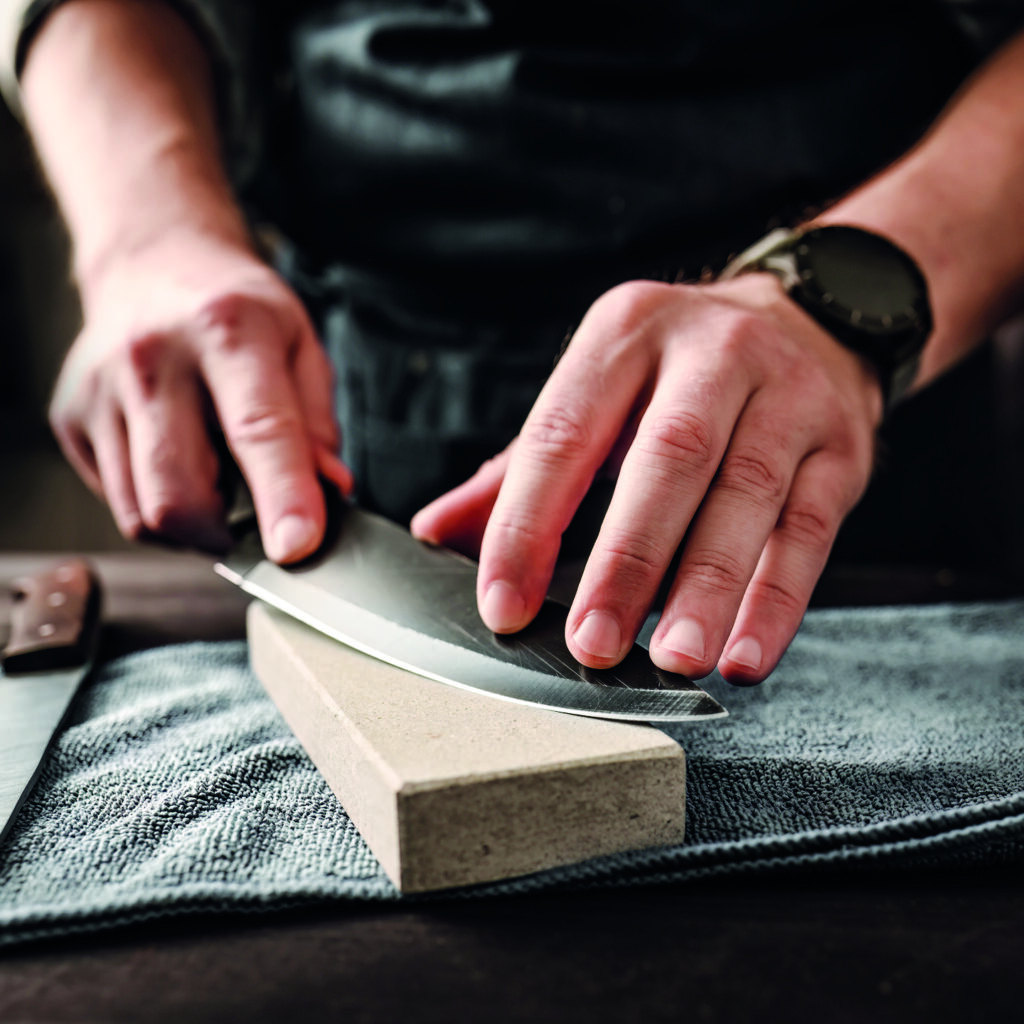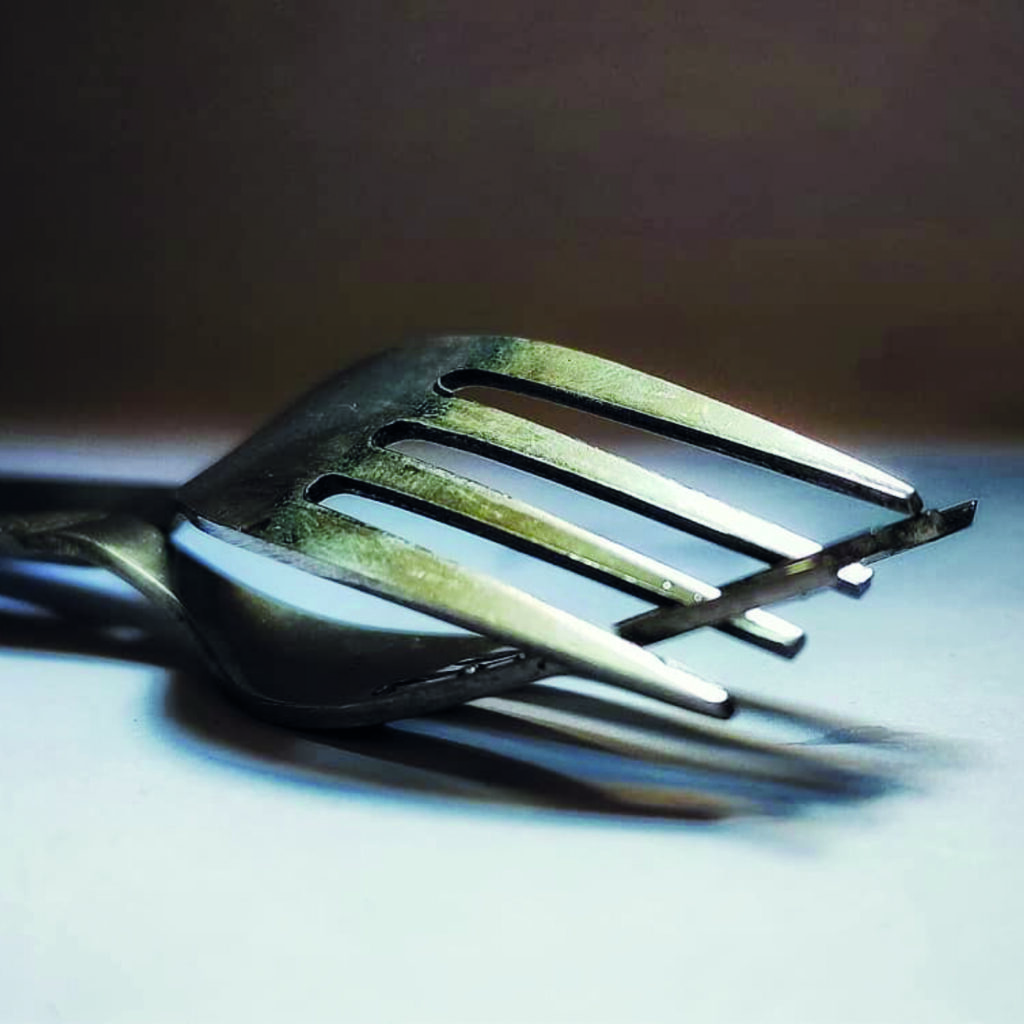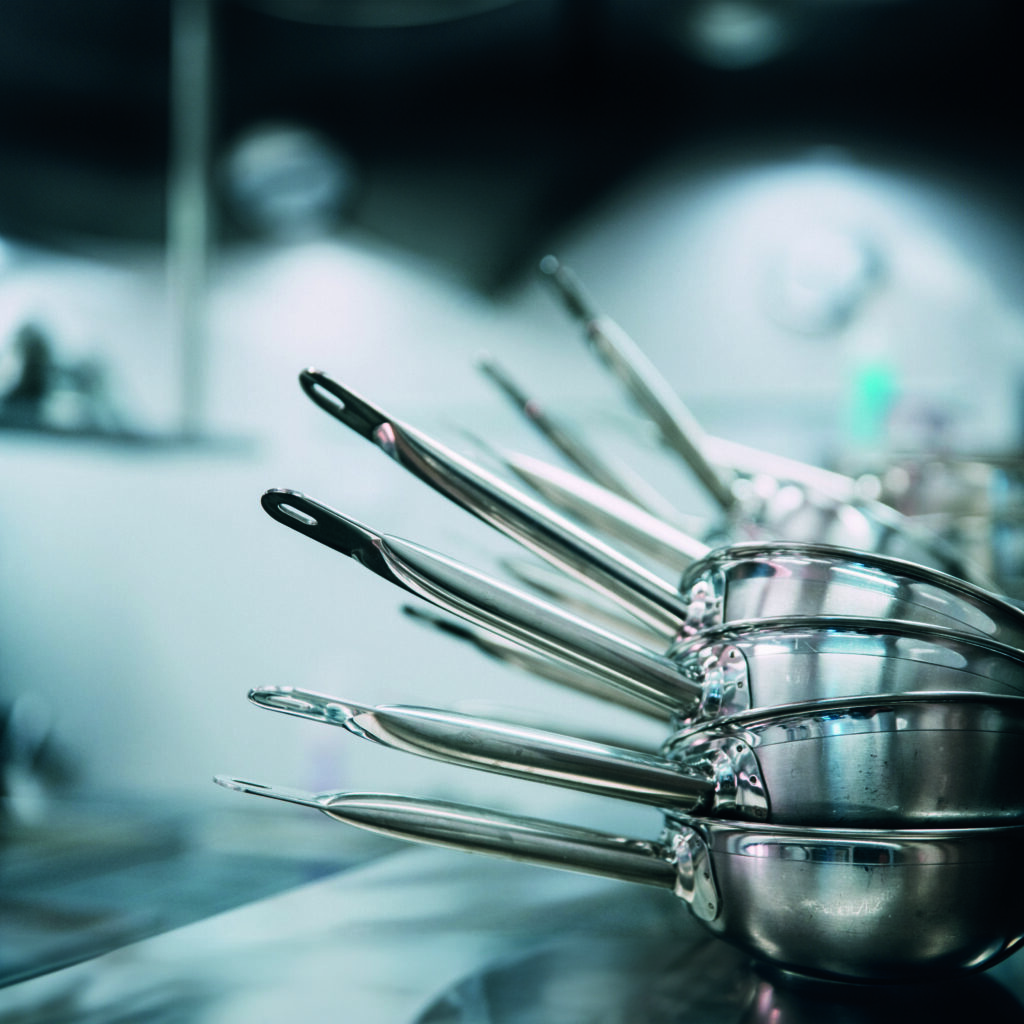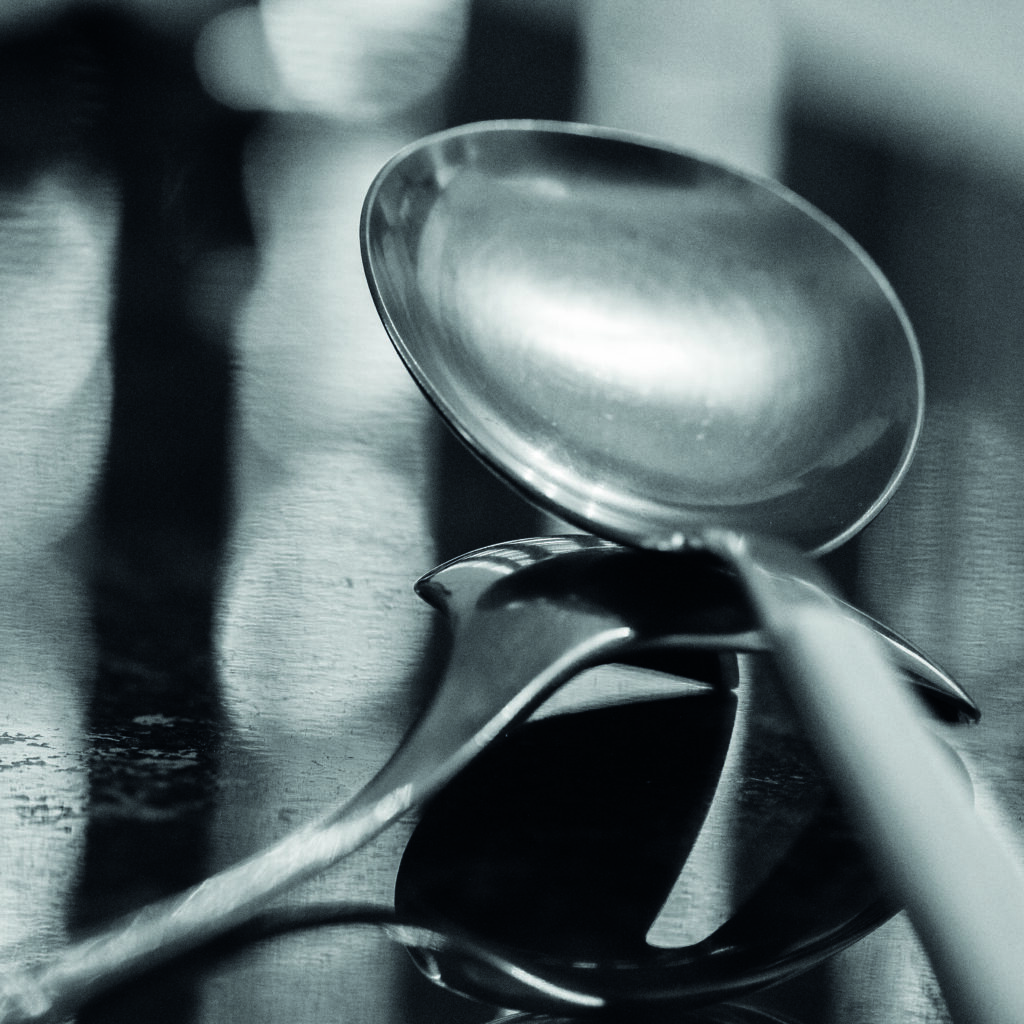Steel is a crucial material in our society. Its strength and malleability have allowed it to be transformed into varying shapes, structures, and tools, both big and small. In this series, we explore how steel has become a part of our world—in the most conspicuous and inconspicuous ways. Here, we explore steel in the kitchen and the meeting point between culinary spaces and this valuable material.
Metals have helped us prepare, cook, and consume foods for hundreds of years, from early tools and vessels to modern cookware and appliances. From earlier metals, such as bronze, silver, and wrought iron, steel has relatively recently emerged as a dominant feature of the modern kitchen. Stainless steel has become one of the most prevalent materials in the kitchen since its popularity in the twentieth century. However, there is more than meets the eye regarding the application of steel in the kitchen than its sleek, timeless look. Namely, steel’s material properties and functionalities contribute to its universal popularity.
Going Stainless
The history of stainless steel dates back to the eighteenth century and the discovery of chromium and iron-chromium alloys in the nineteenth century. In the early nineteenth century, French engineer Pierre Berthier produced steel containing chromium in low amounts and recommended it for cutlery production based on its improved hardness and corrosion resistance. In the early twentieth century, the discovery of stainless steel by modern standards—i.e., martensitic, ferritic, and austenitic—revealed its commercial potential.
… a firm in that city (Sheffield, England) has introduced a stainless steel, which is claimed to be non-rusting, unstainable, and untarishable.”
John M. Savage
“A NON-RUSTING STEEL; Sheffield Invention
Especially Good for Table Cutlery.”
The New York Times, Jan. 31, 1915
Form and Functionality
While iron and aluminum are also popular in kitchen products, stainless steel is advantageous over these other metals. Thanks to its ability to resist corrosion—an oxide layer that protects the steel and makes contact with moisture is a nonissue. Additionally, acidic foods and various cleaning products have little to no impact on the material’s surface, making stainless steel ideal for the modern kitchen. Despite what other composite materials might advocate, stainless steel can also be used similarly to a non-stick pan.
Stainless steel is valuable in the kitchen for its material properties, including the even distribution of heat across its surface. Preheating a stainless steel pan is the optimal way to take advantage of even heat distribution and the Leidenfrost effect—i.e., the creation of a layer of vapor between the hot metal surface and water. The even heat distribution combined with the Leidenfrost effect makes stainless steel cookware the ideal choice in the kitchen, along with its surface and anti-corrosion benefits.
Timeless and Modern
Today’s home kitchens have gone through a series of trends in the late twentieth century, with farmhouse-style kitchens and black-and-white appliances making headway. However, the turn of the century and the 2000s marked a return of the stainless aesthetic to the home kitchen. Its staying power has been attributed to its sleek and modern appearance, the material’s durability, and even its “manly” character as more men spent time cooking in modern kitchens. Whatever the cultural reasons, stainless steel has helped us prepare food for over one hundred years and has become integral to our everyday culinary lives.
Artful Craftsmanship: The Knife

Perhaps unsurprisingly, the modern kitchen knife, most commonly known as the chef’s knife, can trace its origins back to the manufacture of swords and daggers. Before the kitchen knife, smaller knives for food preparation were created until the 1700s and the founding of Peter Henkel’s “knife empire.” Recognizable today via the “Zwilling,” or twin symbol, the design of the chef’s knife revolutionized cutlery. The “German” style of chef’s knife is characterized by its curved blade, and it is produced using “soft” steel, making it capable of withstanding the harsh conditions of the kitchen. Across the globe, following the tradition of the samurai sword, the Japanese chef’s knife also gained popularity. It is speculated that the shape and form of the Japanese chef’s knife were highly influenced by the French design of the chef’s knife. Today, the German and Japanese chef’s knife still holds the luster of tradition, quality, and craftsmanship in the modern kitchen.
A “Devilish” Utensil: The Fork

While it might be challenging to say if any utensil has been given such moral, cultural considerations as the humble fork, whether two or four-pronged, it occupies a curious space in culinary history; early forks were made of bone, while Romans dined with bronze and silver forks. However, despite their prevalence, they were not always well received in history and were often ridiculed as items that the overly decadent or vain utilized. The fork continued to make progress in Europe from Italy, where it was popular as a tool for eating pasta. Two-pronged versions were widely popular as an accessory to the knife for cutting. Later, additional prongs and a slightly different design also made it ideal for transporting food from the plate and even scooping up food. Its popularity waxed and waned. Louis the XIV insisted upon eating with his hands, while the aristocracy at the time began to engrave their cutlery. Today, the modern fork has come a long way in its adoption and standardization, including the familiar use of stainless steel.
Reliable Material: Pots and Pans

The earliest pots were made from the earth, typically clay, and brought the techniques of boiling, steaming, and roasting to the history of cooking. Metal cookware, such as copper and cast iron, continued this trend further with large cauldrons used for cooking. However, stainless steel pots and pans became one of the most valuable tools in the kitchen for its material properties, including the even distribution of heat across its surface. Stainless steel can also withstand high heat and produce a “non-stick” like phenomenon. Preheating a stainless steel pan is the optimal way to take advantage of the Leidenfrost effect—i.e., the creation of a layer of vapor between the hot metal surface and water. Thanks to its durability, stainless steel pots and pans are a staple in commercial and home kitchens. Even the most modern kitchen appliances, such as self-stirring appliances, utilize stainless steel in their containers and built-in blades.
Class and Diversity: The Spoon

While its utility may be straightforward, the spoon has a fascinating history, namely, its diverse applications. Ornamental and religious spoons date back to 1000 years B.C.E., most of which were utilized for significant religious applications. Ceremonial spoons remained common until Ancient Greece and the Roman Empire, where spoons out of metals, such as bronze and silver, began to be associated with wealth and class. Some spoons in Medieval Europe also began to be made from various materials, including horns, wood, brass, and pewter. Eventually, metals began to dominate the production of the spoon, but only among the elite. The phrase, being “born with a silver spoon in your mouth” dates back to when silverware was a sign of status. A customary gift at a christening was often a silver spoon. Eventually, the advent of stainless steel flatware made the metal spoon more commonplace, but its history shrouds the spoon in ceremony.


